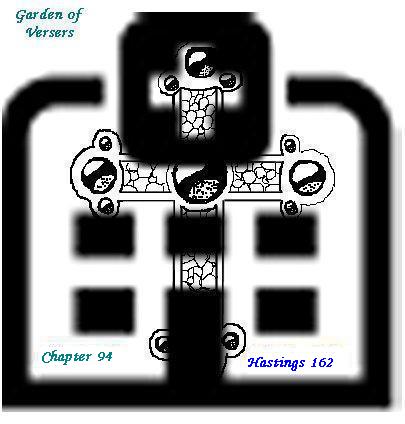
Patreon or PayPal Me keeps this site and its author alive. Thank you. |
Stories from the Verse
Garden of Versers
Chapter 94: Hastings 162
Table of Contents
Previous chapter: Chapter 93: Beam 25

The next day Lauren continued her treatise on the New Testament by introducing Mark’s Gospel. At this point she brought in what she remembered of scholarship, of the theory of the collection of short accounts from the life of Jesus scholars called “Q”, the debate over whether Matthew was written first and Mark decided to create a shorter version, or whether Matthew was working from Mark and expanding with more information. She remembered that some early writer had made a connection between Mark and Peter, one of the closest of Jesus’ students, asserting that Mark was recording Peter’s recollections, but that there were also a few places where Mark himself seemed to be an eyewitness to events. Mark was also known to be related to a man named Barnabas, who became more important in the history after Jesus had ascended into heaven. She again recounted a few miracles and a few parables and teachings that she thought were in that book.
Luke was the next installment, which she noted was not only the longest Gospel, it also was book one of a two-volume set, the second book, Acts, continuing the story after the resurrection, beginning with the ascension and discussing what happened after that. Luke was the only one of the four Gospel authors who had never met Jesus during His earthly life, but was also the most careful historian, working hard to include facts such as accurate identifications of rulers. It is also apparent that he interviewed Mary, and recorded many of her memories, with the statement that she had committed these to memory when they happened. He is generally thought to be the only New Testament author who was not Jewish, and to have been a medical doctor. There were again similarities and differences between Luke and the other accounts, suggesting that he certainly had a copy of Mark’s work for reference, access to some of the same sources as Matthew, and additional sources from interviews with people who had been there. She recalled the Good Samaritan and Prodigal Son as parables only he included.
The day after that she tackled John, noting that his account was the most different from the others, containing longer stretches of teaching and dialogue, and fewer miracles, each selected because it demonstrated something about Jesus. She recalled the healing of the man born blind, and the raising of Lazarus from the grave, turning water into wine, and walking on water. She also remembered some of the teachings, although not in the detail she would have liked, such as the discussion of being born again, and the emphasis on the idea that Jesus had come from God into the world and was returning to God after His mission was completed.
Her foray into Acts was less organized, as she wasn’t certain of the sequence of events, but she discussed most of the major people involved such as Peter and John and James and Steven and Philip and Paul and Barnabas, critical events such as the day of Pentecost, Paul’s conversion, the preaching at the home of the non-Jew Cornelius, the delivery of the message to Samaria, the council at which decisions were made about what the non-Jews had to do to become Christians, and the several arrests of Paul. She made the point that the book told the events which carried the message from the small province of Judea to the heart of the Roman Empire and the court of Caesar himself.
She stayed with Romans for a full day, but after that covered more letters each day as they got shorter. She realized that some she knew considerably better than others, and thought she should remedy that. When she reached Revelation, she admitted that it was a difficult book that she did not know nearly as well as she ought, and that there was a lot of disagreement about its meaning. Its ultimate message, though, was that God is in control despite everything that happens in the world, and Jesus is returning soon.
Outside of those sessions, she was still making the effort to learn the names of all her caregivers. They in their turn were warming up to her. At first when she asked them about themselves they said it was the policy of the facility that staff were not to share personal information with patients, and she agreed that there was sense to that policy--but she still kept asking, and excused her determination by saying that it was only polite and caring to show an interest in the lives of other people. Soon she was learning more about some of them, particularly the dietary workers and the orderlies, less involved in her treatment. She also shared what she could of her faith with them, quoting scripture, teaching the gospel message, and praying for and with those who would let her.
This did not go unnoticed by Doctor Conway, who eventually asked her why she was so interested in the lives of the staff. “Well,” she said, “I’ve been telling you all about my faith, my religion, and it should be obvious that it teaches us to love others and try to do for them what will make their lives better. How can I do that, if I don’t even know who they are?”
The doctor nodded, but seemed concerned about this. He did not say why.
There is a behind-the-writings look at the thoughts, influences, and ideas of this chapter, along with twelve other sequential chapters of this novel, in mark Joseph "young" web log entry #306: Versers Refocused. Given a moment, this link should take you directly to the section relevant to this chapter. It may contain spoilers of upcoming chapters.
As to the old stories that have long been here:

